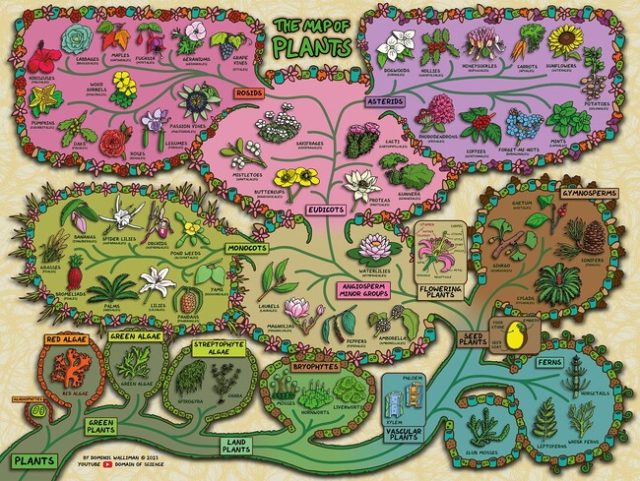
Physicist Dominic Walliman, known for his adeptness in creating comprehensive conceptual maps, has once again ventured into the realm of knowledge visualization with his latest creation—the Colorful Map of Plants. Recognizing the inherent difficulty in comprehending the vast diversity and evolution of plant life, Walliman set out to construct a visually engaging and informative map that highlights both the differences and similarities within the intricate world of flora. Drawing on his background in physics and previous experiences crafting educational graphics, such as the revealing Map of Medicine, Walliman’s Map of Plants serves as a captivating resource to unravel the complexities of plant biology. The map adopts a structure akin to Walliman’s previous works, presenting a vibrant and detailed chart that unfolds to guide viewers through the intricate web of botanical knowledge. Walliman goes beyond mere aesthetics, delving into essential botanical concepts and classifications, elucidating the DNA differences between various plant species, and exploring their diverse reproductive systems involving spores or seeds.

With a focus on evolutionary history, the map provides a comprehensive overview of plant types—from algae and bryophytes to ferns, gymnosperms, angiosperms, monocots, eudicots, rosids, and asterids. Walliman encapsulates the success of plants by dissecting their key features, including leaves, roots, vascular systems, spores, seeds, flowers, and fruits, offering a holistic understanding of the botanical world. Walliman’s journey into creating conceptual maps stems from his frustration during university lectures, leading him to develop visual representations that could untangle complex subjects and help both himself and others navigate through the intricacies of various fields of knowledge. His passion for providing accessible primers on diverse topics shines through in the Map of Plants, encouraging a deeper appreciation for the rich tapestry of plant life that sustains our planet.